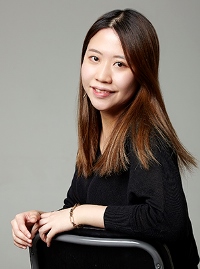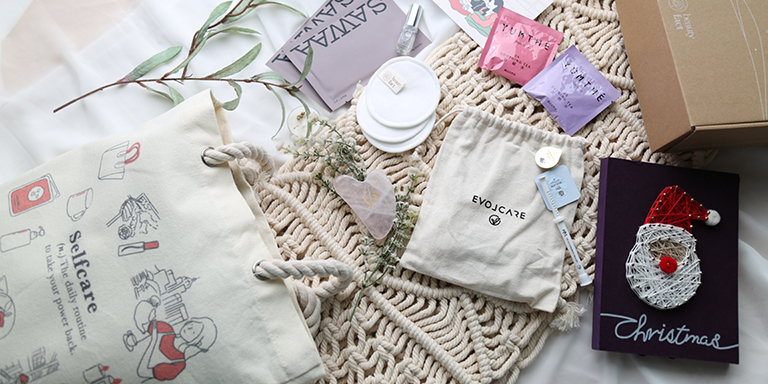
Beauty is big business in Hong Kong, with beauty and personal care revenue reaching US$1.95 billion in 2021, according to Statista. But consumers’ needs are evolving and great marketing and glossy packaging for beauty products are no longer always enough to seal the deal. As the clean-beauty trend gathers pace in Hong Kong, consumers want to know if the product is safe for their skin and the environment and are steering clear of conventional beauty ingredients that are possibly dangerous, such as parabens – chemicals that are commonly used as preservatives in cosmetics – and synthetic fragrances.
Lifelong eczema sufferer Olivia Chan often struggled to find products that were kind to her skin. This inspired her to set up Beautyfact, an app that guides users to clean beauty brands and checks product ingredient listings. Since launching in August, she has connected with more than 40 local and Asian beauty companies, most of which are independent. There are already more than 4,000 active users a month on the app and the average user engagement rate is more than 78%, she said.
Once signed up to the Beautyfact app, users can become members and access the latest beauty news and brand discounts, while events such as skin consultations are planned for next year.
Which beauty-product ingredients should consumers watch out for?
Some of the parabens family, fragrances and nano titanium dioxide cause different levels of side effects to our skin and health. Some ingredients are fine for normal usage but can be risky if pregnant, like benzoyl peroxide and salicylic acid. Other ingredients are not only harmful to our bodies but also damage the environment: oxybenzone and octinoxate, for example, may cause coral bleaching. To address these concerns, we’re launching a filter function for pregnant and breastfeeding users and another for environmental pollutants.
How does the app work?
We check product ingredient listings from multiple sources, including the banned list from the European Union and Japan, and the US FDA [United States Food and Drug Administration]-approved ingredients list. We’ve included more than 5,000 ingredients so far but there is still a long way to go.
What are the challenges of consolidating this information?
Some ingredients are fine to use in certain amounts but may cause side effects in excessive doses. As most of the brands do not provide the exact formulation, it’s a challenge to calculate the safety level. We can only alert customers to it.
There are always new updates in scientific research, too. Some controversial ingredients may be proved to be safe in new findings, so keeping the database updated is a challenge.
What are the main factors influencing Hongkongers’ beauty-product choices?
Product authenticity and quality are the major concerns for Hong Kong customers, and it’s difficult for small to medium brands to be discovered and build loyalty. The local market is still currently dominated by giant groups like P&G, Shiseido and L’Oreal, who have the advantages of global production lines, technology and marketing.
However, there are many up-and-coming local independent brands, including Woke Up Like This, Factiv and Botanic Pretti5. These brands are eco-friendly, science-backed and incorporate Chinese-medicine elements.
Does the app have many users outside Hong Kong?
About 20% of users are from Taiwan and 5% come from Singapore. These will be our next target markets as the consumer landscape, language and beauty culture are similar to Hong Kong’s.
What advantages does Hong Kong offer tech start-ups like yours?
In addition to the simple tax system and easy business set up, what I love about Hong Kong is the fast pace of the city. As a start-up, it’s a very efficient environment to get feedback, test market response and even find the first group of target customers. The high spending power of Hongkongers is also a benefit to consumer products-related businesses.
What trends do you notice in the Hong Kong beauty market?
Personalised products are a worldwide trend after the pandemic: 56% of global customers are looking for tailor-made skincare and cosmetic products according to a US-based study. This is a very good chance for independent brands to extend their service.
What are your plans for Beautyfact over the next 12 months?
We will integrate the app with a face-detection function to help users identify skin problems together with a journal to record information such as changes in products, mood and so on. We’ll launch the updated mobile app in the first quarter of 2022.
We are also working with some wellness workshops, as good mental health is important to skin quality. On the product side, we are working with clean brands in Asia to put together a Christmas gift box.
How do you expect the beauty industry to evolve?
I think brand behaviour is driven by consumer choice and market trends. If more consumers choose to spend on transparent, responsible brands, it will encourage the big beauty groups to act more responsibly.
Related link
Beauty Fact

